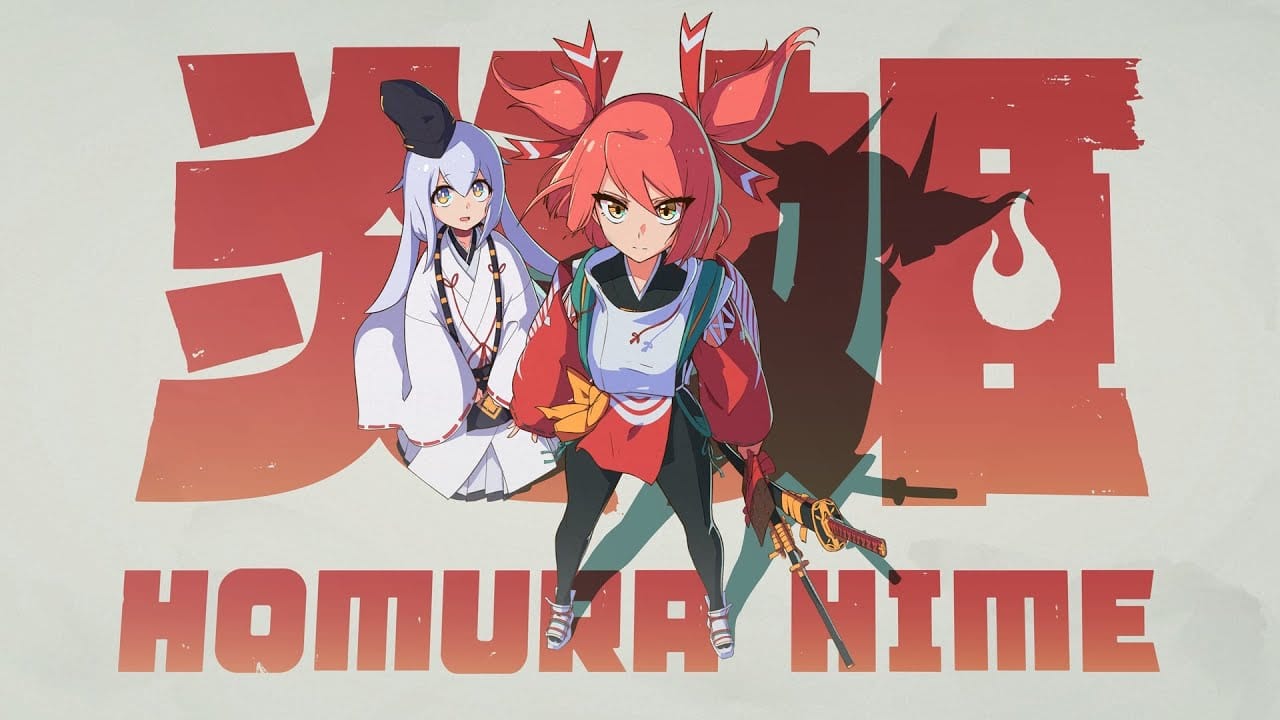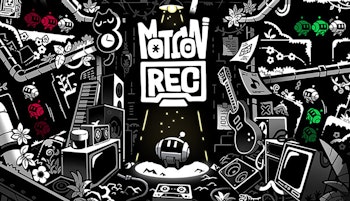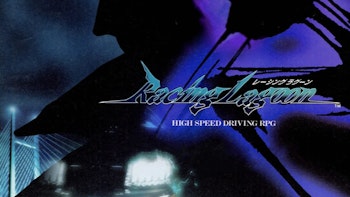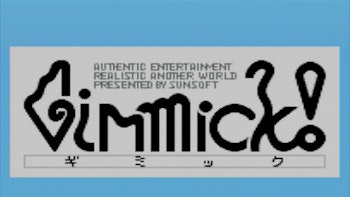
Of all the indie game publishers supporting solo creators and small teams in bringing their work to the public, PLAYISM have a surprisingly varied and long history. Despite the Japanese indies scene being a bit behind the industry internationally in terms of prominence, it has its own success stories, many of which have been orchestrated by the long-running publisher. They’re the publishers who helped bring hits like The Exit 8 and Momodora to the public consciousness alongside Gnosia, which recently announced an anime adaptation, and even titles that haven’t reached the stratospheric international success of these games are often curated to a high standard by an experienced hand with talent in bringing their best out of the developers they work with.
Yet unlike publishers who have been able to make their seal of approval and funding a brand of broad recognition like Devolver Digital, this is a name that outside of more tuned-in indie gaming fans in Japan is likely unknown in spite of their library.
Back in September, they appeared amidst the bustle of the biggest publishers showcasing their work at Japan’s biggest gaming festival, Tokyo Game Show, just as they are at every event large and small, with showcases for newly-released titles and already-available and beloved releases that make the publisher one worth paying attention to.
Before that, though, who even is PLAYISM? The label was founded by Active Gaming Media in 2011 with the intent of being a company that focused on localizing indie titles for Japan and bringing indie games to the Japanese public as well as internationally. This is reflected in their lineup over the years that includes everything from Touhou games to the Japanese release of Her Story, but even at the time of the company’s launch they were providing localizations for beloved early indie darlings like Machinarium.
In this early iteration of the company, before the entrenchment of Steam as the platform of choice for PC gaming, the company ran their own PLAYISM storefront that promised exclusivity for their games on the platform as part of their publishing agreements. Their first game was a small puzzle title named Desi Leaves Town, which had staff shared between Tokyo and New York.
They were quick to attract high-quality titles, however, signing up the highly-popular La Mulana remake from a publishing limbo and helping propel the game’s cult success. More notably, their early efforts placed a heavy focus on providing a platform for indies to reach a larger audience through cooperation and collaboration. Their exclusivity to the PLAYISM store was in exchange for minimal or zero-cost localization, and early into their operations they would partner with Sony at TGS for an indie showcase, and were one of the companies that helped to found Japan’s biggest indie gaming event, Bitsummit.
Their partnerships made them a trusted figure in the space. After working with him as a judge on a contest to find new games that the company would publish, Cave Story developer Daisuke Amaya (Pixel) would entrust them to be the publisher for his newest game, Kero Blaster, in 2014. More recently, the team has handled numerous hit Japanese indies like Deeeer Simulator, Signalis, and more.
All of which makes them a name to watch, and at Tokyo Game Show the company made a signal of intent with the breadth and range of genres for titles showcased at the event. Alongside new ports for staple hits like the aforementioned Momodora and a separate photo spot elsewhere in the venue, the company showcased a strong lineup of new titles as we head into 2025. Most of all, it’s a lineup that prioritized the creative heart of the indie and four in community in Japan above any licensed efforts, showcasing a strong indie spirit in the country that was evident elsewhere also as we head into the coming year.
Nitro Express
Nitro Express takes the pixel-driven intense action of Metal Slug to the streets of Tokyo and trades military uniforms for cute girls with assault weapons and scopes. From the moment I sat down with the demo for Grayfax Software's Nitro Express I could barely pause for breath, as you are left with the task of dealing with autonomous drones gone awry on the streets of Tokyo Special Administrative Region, Nitro City.
Without any limits on ammo and plentiful guns and grenades at your disposal, the challenge is to let rip into the swarming multitudes of drones that threaten the peace. You even have lasers that only need a brief bit of cooldown before destruction can once again be unleashed on the hunks of metal in your path. The game is a constant rush of new weapons and non-stop action that in short bursts in particular feels particularly thrilling, especially when forced to take on larger vehicles that might be immune to traditional weaponry.
What will be interesting is whether the game can live up to expectations when it slows down and has a story to tell. Story is told through optional radio communications so can be entirely skipped, but is that simply a convenient option for those on repeat playthroughs or speedrunning the game or a sign that the game lacks the depth once the initial fun wears off? Only time will tell there, but early signs are promising.
Haruka: Beyond the Stars
Fresh off the release of Giraffe and Annika, Haruka: Beyond the Stars is an eccentric story-driven 3D RPG adventure from developer Atelier Minima with manga panel-style cutscenes that provide a quirkiness and allure to this intriguing world. While their prior game was a simpler affair, exploring the island of Spica with simplistic rhythm game-esque battles, this adds an intergalactic twist to proceedings when Miiya mysteriously crash-lands her spaceship near the usually-peaceful childhood home of Yuuki.
With Miiya seeking a way home and Yuuki wishing to learn about his father, who left one day to explore the stars but never returned, the two travel together to uncover the truth.
Battles are a pseudo-turn based affair, with abilities that must charge before each use. You can freely switch between both protagonists and move freely around the 3D environment (and indeed must in more complex fights and bosses to avoid damage and defeat), timing attacks correctly to deal more damage. The tone, meanwhile, is almost childish, fitting for the coming-of-age antics and child cast, with a penchant to have some fun with things by including plentiful gags and even fun ‘next episode’ previews at the end of each chapter.
Despite their simplistic appearance the designs of its characters and lighthearted tone are the point, and the creator’s debut title exceeded expectations with much to uncover beyond its modest exterior. Here’s hoping that Haruka can similarly deliver.
Million Depth
Picture a 2D sidescrolling adventure mixed with the movement-based time-freezing mechanics of Superhot, plus a bit of crafting, and you have Million Depth by Cyber Space Biotope, by far the most unique title PLAYISM had on show that leans into their willingness to take a chance on riskier and more unusual ideas.
The game follows Moma, a human girl from space who visits the planet to find ‘you’, her Earth friend who mysteriously lost contact. Most people have long retreated into the miles-deep underground caverns of Naraka Akasha, the only remaining habitable space, so you must dive in order to find your friend and what has come of the remains of civilization. This premise opens the floor to a unique blend of survival and strategy action. Diving deep uses oxygen, limiting the number of floors you can descend, and you need to trade items with merchants, scavenge for resources, rest and heal, as well as face off against monsters to have any chance of survival.
When encountering a monster, you must craft weapons using blocks found on your descent that can be crafted freely into any shape in order to inflict damage. In the midst of battle, whenever you or your weapon move, so do your enemies, requiring careful planning in order to remain unscathed and with the energy necessary to discover the truth.
The final game promises multiple endings, varied floors and NPCs who react differently, providing plenty re-playability. Once the story is complete, discovering a quick descent will be one way to keep speedrunners coming back for hours. There’s nothing quite like it or its haunting yet intoxicating allure.
Homura Hime
Perhaps the highlight of PLAYISM’s showcase would be Homura Hime from developer Crimson Dusk, a fluid combo-driven action title emphasizing boss fights and large arenas that test combo skill and reactivity. Beyond the long queues for the title, in this early state it was already surprisingly polished, featuring an early-game multi-phase fight that did a great job in introducing the mechanical flow of the title.
While the full game promises some exploration and a story involving defeating demon girls possessed by deviant emotions while uncovering the truth about their circumstances and her own legacy, what will keep audiences playing and replaying based on this early look is its flashy action. Homura moves with grace and fluidity through the arena, with varied combos both on the ground or in the air that allow you to react at a moment’s notice if you see an enemy ready to strike back. Dodging and deflecting bullet hell-like attacks is key to victory, also charging up a meter for Homura to strike even harder, rewarding risky play making no fight a surefire conclusion.
The game has been long in the making, first announced by PLAYISM over two years ago, but with a 2025 planned release on the horizon this is an exciting action game to keep on your radar.
The team’s strength is in its curation, and a look to the future alone ignores the great recent titles the company has supported also. While they’ve certainly evolved from their initial mission statement and the PLAYISM store is no more, there’s plenty to be excited about. If this is your first time hearing of them, why not check their archive? With a decade of plundering of the Japanese indie and doujin scene while supporting creators across East Asia and introducing them to Japanese and global audiences, there’ll surely be something that will catch your eye.
Plus, in an environment increasingly difficult for indies and publishers alike as the industry struggles to support new creators and some publishers are even closing down altogether, it’s worth celebrating a publisher still willing to take risks on new ideas.







